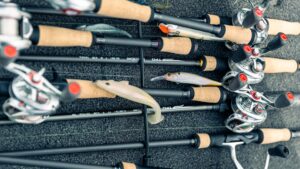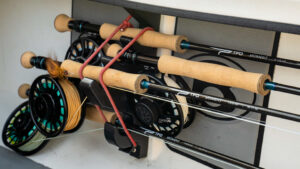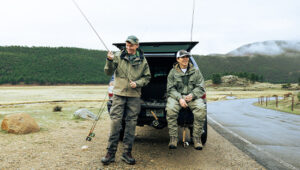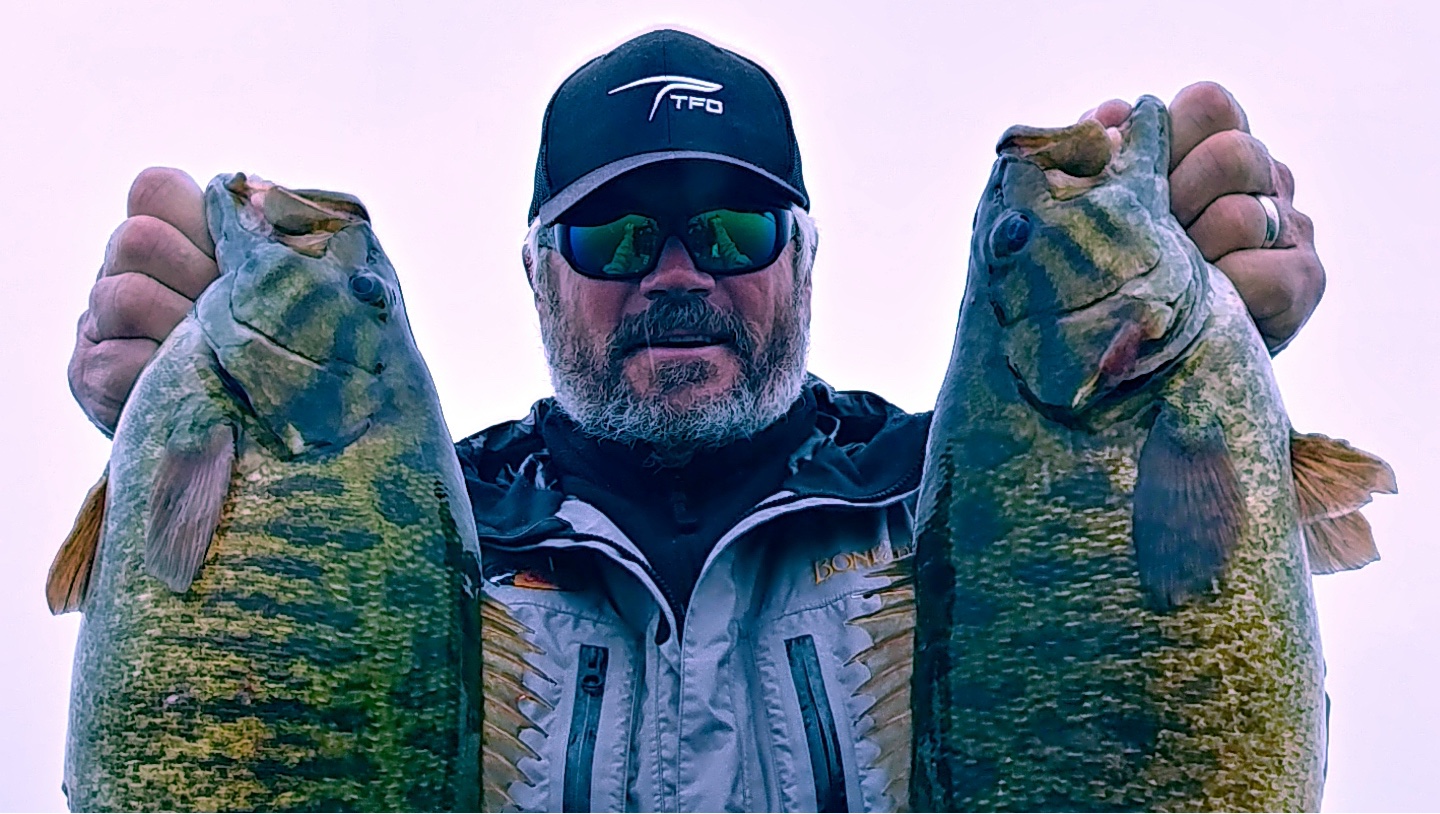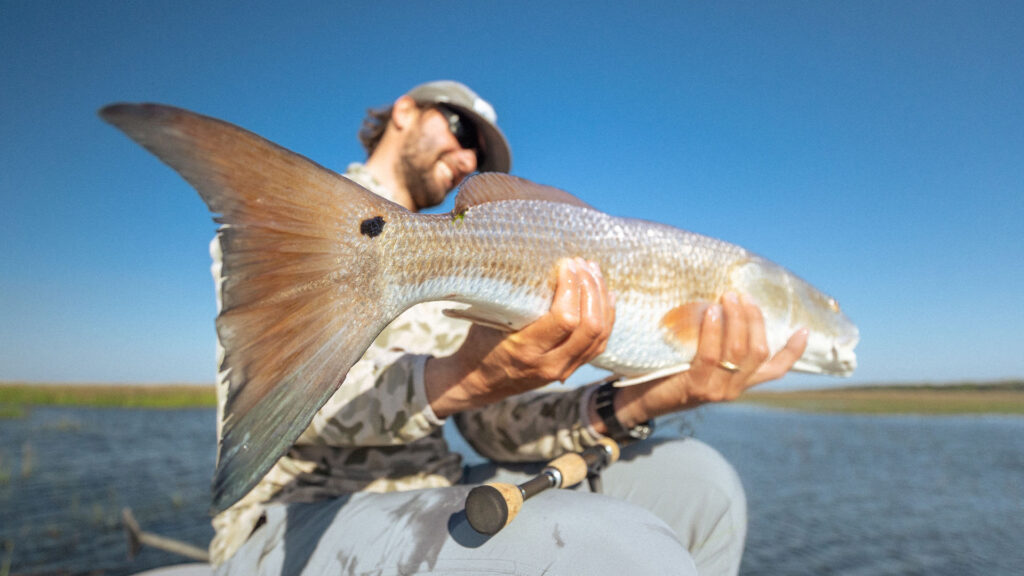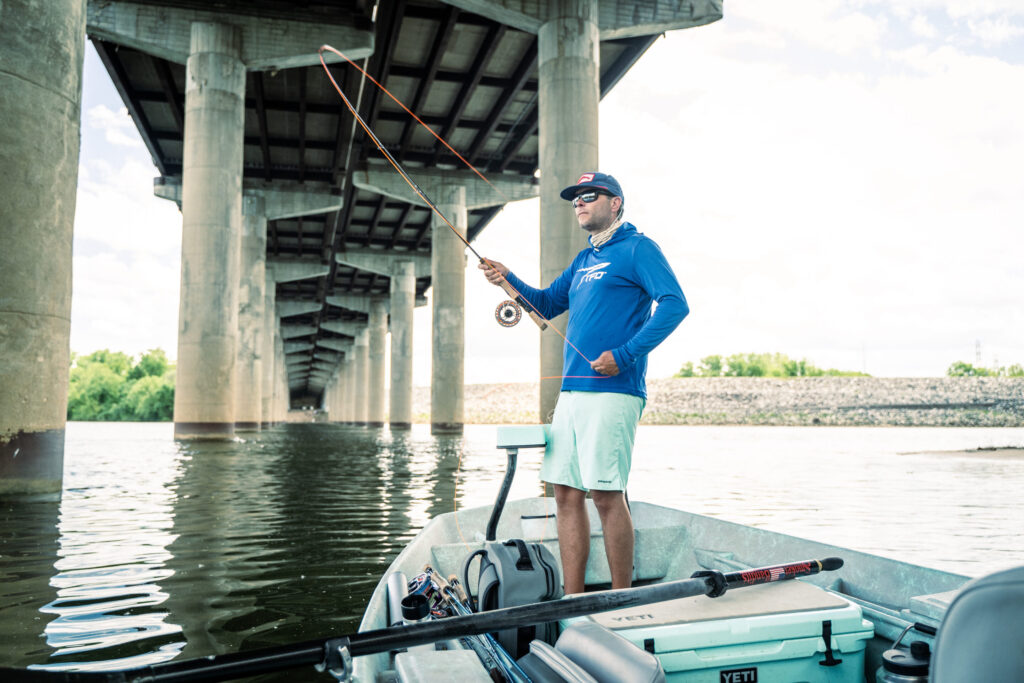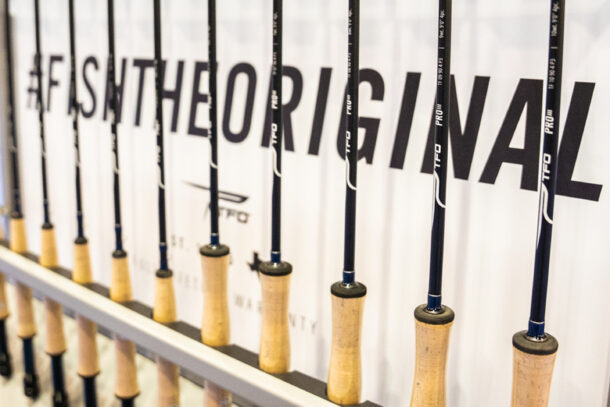Editor’s Note: This post comes from TFO Ambassador Burnie Haney. Enjoy.
When we talk about ice out bass fishing in the northeast, we’re talking cold water, and believe me, it’s specialty fishing. In short, you must really want to do it, or there’s no point in reading any further. Now, for those of you still with me, we’re going to review what to wear, where to find these fish and review five lures and setups that will help get you bit during this cold-water period.
Dress for the Conditions
First and foremost, remember the acronym C.O.L.D. Wear Clean clothes, don’t Overheat, dress in Layers and try to stay Dry. Don’t forget you can always take layers off if you get too hot during the trip, but if you don’t have enough on it’s hard to stay warm. Also, nothing will end an ice-out trip faster than wet clothes or cold hands or feet. I prefer to use finger-tip wool gloves that allow me to feel my line, yet they cover 90-percent of the exposed skin, and they still provide warmth if they do get moist or wet from casting. The other required items are a quality set of waterproof boots, a cap with a bill and a nice wool cap to wear over it along to keep your head warm, along with a pair of polarized glasses.
Where to Start
I’ve had my best success starting my search in the northwest corners on most ponds, lakes or reservoirs. This area of water usually warms the fastest after the ice out, and if you can find good hard cover, it’s a big-time bonus. Oftentimes the bass will be relating to deep water structural elements (rock piles, ledges, humps or the ends of secondary points) nearest spawning flats they intend to use in the next 60-90 days. I’ve found using my side-imagining unit I can quickly identify these areas and see if any fish are present. Remember, these fish have had a lid over them for the past 4-6 months and once the water opens, they’re going to feed in anticipation of the annul spawn that’s just around the corner.
As far as the ideal depth, it’s a relative thing depending on how deep your lakes are and where you’re fishing, but I’ve found most often that starting in the 15 to 20-foot zone adjacent to spawning flats is a reliable zone. Once I identify where the fish are holding, I scout around that general area looking for the migration routes out of the deeper water onto the spawning flat. It might be a slight rock vein or old road bed, perhaps a ridge that climbs up onto the flat or maybe a ditch or cut that comes out of the deeper water up onto the flat or one of last year’s submerged weed beds.
Not to over simplify it, but I’ve always treated this cold to warm-water migration much the same as when I go anywhere; I usually have a target destination, and I arrive there by traveling known routes along the path of least resistance. Think of the points, ledges, ditches, cuts or weed beds as sidewalks, not unlike if you or I were going to a store or restaurant. We don’t park our car hop out and then wander around the parking lot; instead, don’t we usually select a route, walk straight to the building open the door and go inside? Well, it’s generally the same thing for the bass; they’re looking to feed up so rather than meander all over the water column they too will take an easily identifiable path to get to the prime areas. In this situation. it’s food and a bit warmer water.
Once you’ve located these migration routes, then it’s just a matter of monitoring them as the water continues to warm, and the fish begin to use them more and more. Once the fish get up onto the flats, horizontal baits will produce the most fish, with the quality fish usually coming on vertical baits that fall and stay right in front of fish’s face.
Five Lures to Consider
For those deep-water fish, it’s hard to beat a blade bait like a Silver Buddy or a Heddon Sonar (3/8 or ½ oz). For this presentation I like to use the TFO GTS Bass C735-1, 7’3 MH rod paired with a 6.3:1 reel spooled with 12 to 15-pound fluorocarbon. It’s a good vertical presentation that allows you to cover water quickly and generate a bite that you can duplicate in similar areas of the lake. I start the presentation with a long cast toward the fish holding area and work it back to the boat hopping it along the bottom with short 12-15-inch pops of the rod tip. On the lift, you’ll feel a violent vibration, and on the fall, just follow the lure back down with your rod tip. Usually the hits occur on the drop, so be a line watcher, but sometimes they strike just as you lift the blade up off the bottom. If that doesn’t generate a strike, then try changing the length of your hop, either go shorter or possibly a tad longer.
Another great deep-water presentation is rigging some Berkley gulp minnow on a VMC Mooneye Jig, position your boat directly over the fish and keep the bait about a foot above where you mark them on the graph. I know this sounds goofy, but don’t work the bait. Instead rely on the natural motion of the boat on the waves to give it the slightest amount of movement. Until I tried this technique, I didn’t believe it, but this do-nothing method will get you bit. For this presentation I use the TFO GTS Bass S734-1, 7’3 M rod paired with a 5.1:1 spinning reel spooled with 8-pound Cortland Master Braid and about a three-foot section of 8-pound fluorocarbon leader. And for the jig I start with a 3/8 oz. head and might drop down to ¼ oz.
As the fish start moving into that 8-10-foot zone, it’s a good bet the Jerkbait will do most of the heavy lifting on any given day. Remember those weed beds we talked about earlier, this is where the suspending jerkbait rules. Baitfish are still in and around those weed beds, and the suspending jerkbait gets right in their face and just sits there daring them to bite it and most often they will. Again, we’re talking cold water, so you’ll need to keep your movements slow and subtle. I start with a long cast, give it about six or seven cranks to get the bait down, then give it a slight twitch and let it sit for an eight count. Reel up any slack line give the bait one or two light twitches and again let it set. If this doesn’t generate a strike, then I’ll increase the pause from the eight count to maybe 15. However if I find I’m generating follows but no strikes, then I usually drop down in lure size, and that seems to work. There are a ton of jerkbaits to choose from, and I happen to like Lucky Craft, so that’s what I use. However, having said that the most important thing is depth control and the lure’s ability to stay where it is in the water column once you stop the retrieve. For this presentation I use the TFO GTS Bass 695-1, 6’9” MH rod paired with a 7.3.1 reel spooled with 10-pound fluorocarbon.
As the fish start to occupy areas shallower than 6 feet, I’ve enjoyed good success with a Boot tail swimbait in the 2.8 – 3.3 sizes. There are a bunch out there to choose, but I prefer the Keitech Swing Impact or Fat Swing Impact. I’ve found keeping it simple works best for me, so I use three basic colors — Silver Flash, Blue Gill Flash and Tennessee Shad. I rig these swimbaits on 1/8 or ¼ oz jig head (size 1 hook) and fish them on a slow, steady retrieve. For this presentation I use the TFO TFG PSC 703-1, 7’ ML rod paired with a 5.1:1 spinning reel spooled with Cortland Master Braid and a 36” section of 8-pound fluorocarbon leader.
Another nice dual-purpose bait this time of year is the Swimjig. I use Strike King 3/8 oz Tour Grade in three colors, white, green pumpkin and black/blue. For the trailer I use a Zoom Twin Tail (Fat Albert) matching the jig colors. This is a great search bait for scouring the flats and if you see following fish, simply let the lure fall to the bottom, and the fish will usually nose down on it. As they go to it just give it a short twitch and they’ll hit it and if not just start a normal retrieve and they’ll usually grab it. The other nice thing about the swim jig is if you come across a weed bed you can pitch or flip it in there and work the cover the same as you would with a standard jig & pig. For this presentation I use the TFO GTS Bass 736-1, 7’ 3” H rod paired with a 6.3:1 reel spooled with 20-pound Cortland Master Braid with a 48” section of 16-pound fluorocarbon leader.
I think if you dress accordingly and give these lures and setups a try, that you’ll be pleasantly surprised at just how many bites you can generate when chasing ice-out bass.
In closing, remember cold-water conditions are no joke and require a clear head. Take a cell phone with you and let someone know where you’re going and how long you’ll be out and be sure to let them know when you’re safely off the water.
Good luck and be sure to post those fish catches on one of our social pages. Questions, comments about ice-out bass, let us know those thoughts as well.
